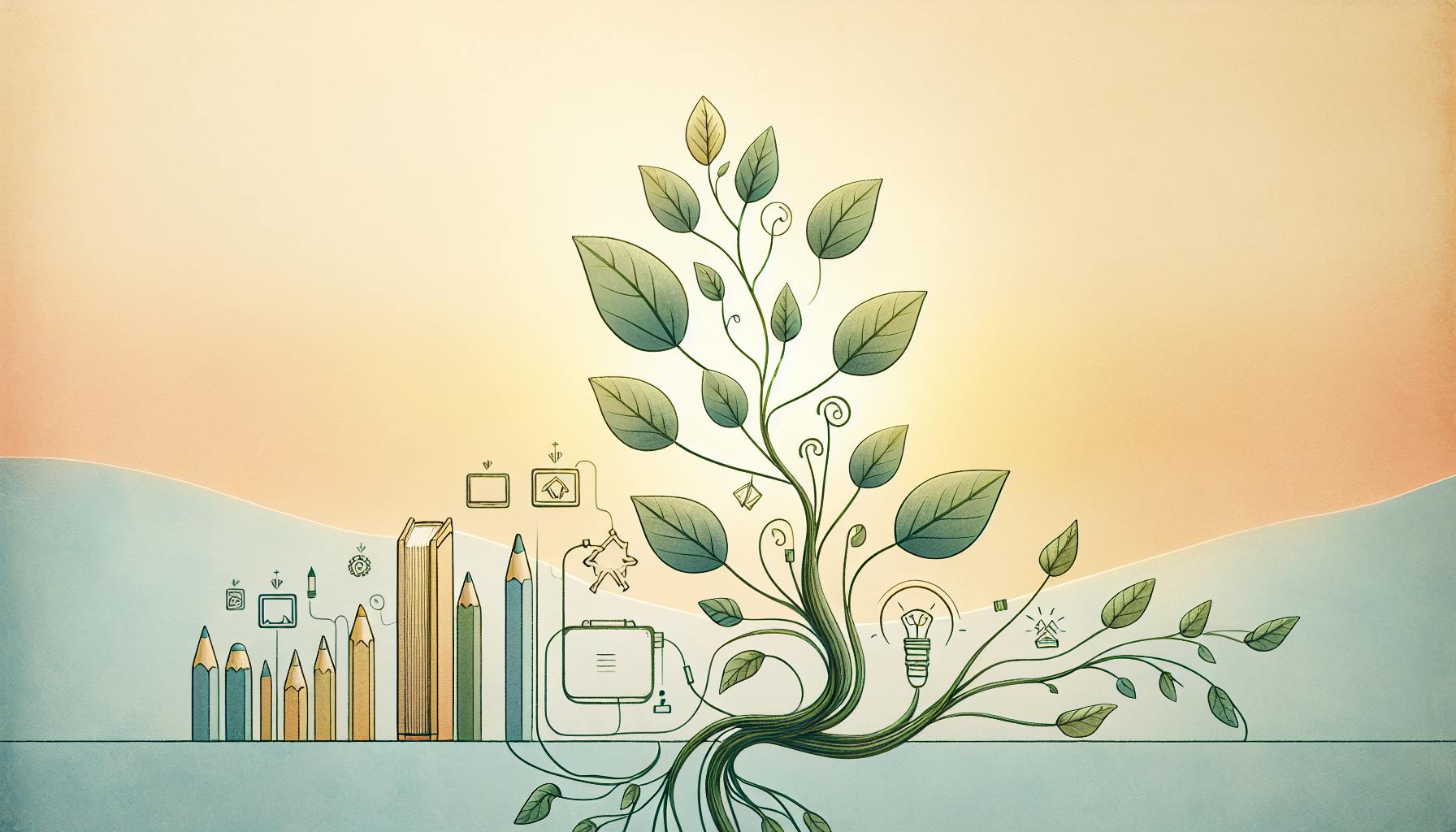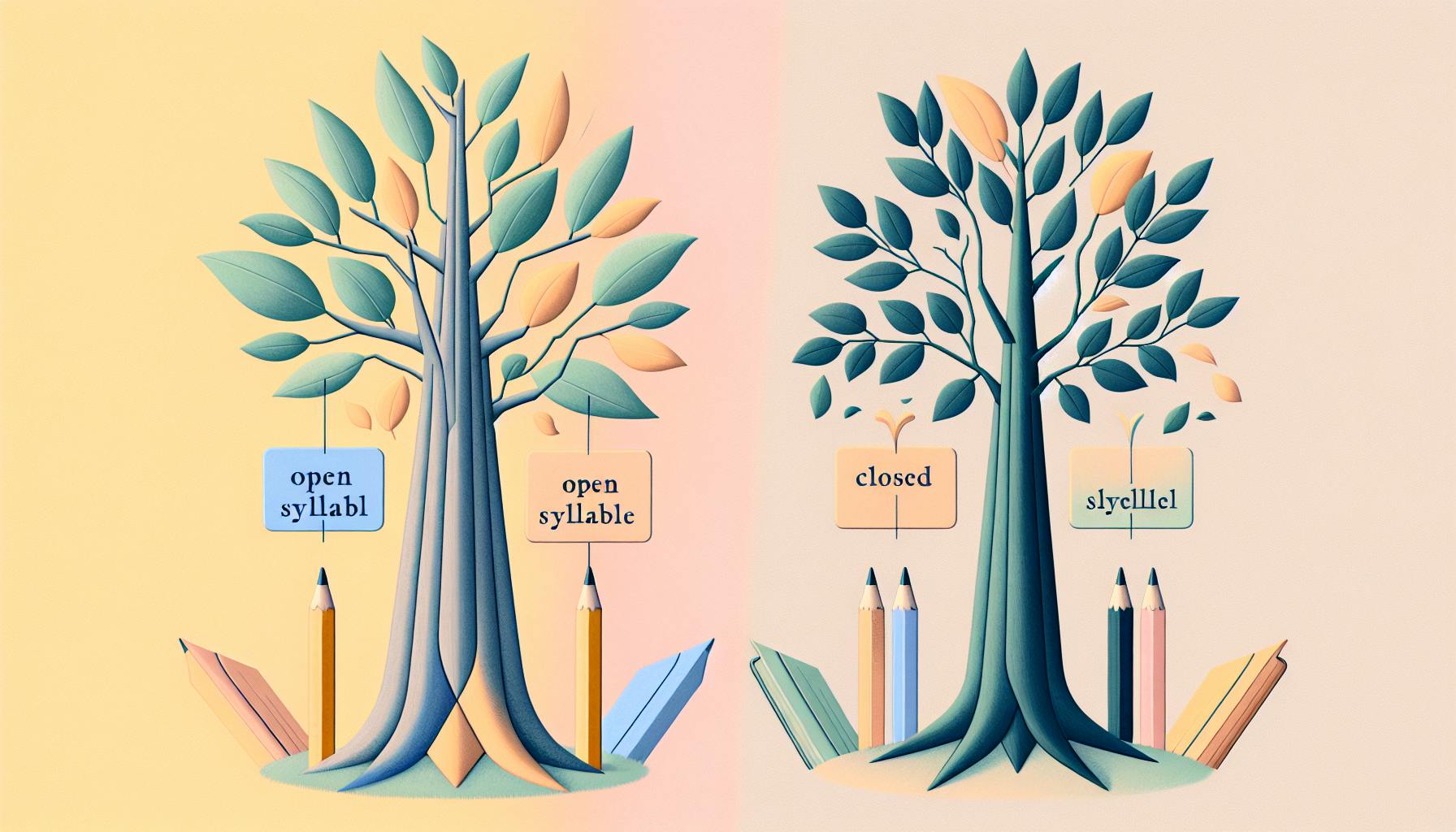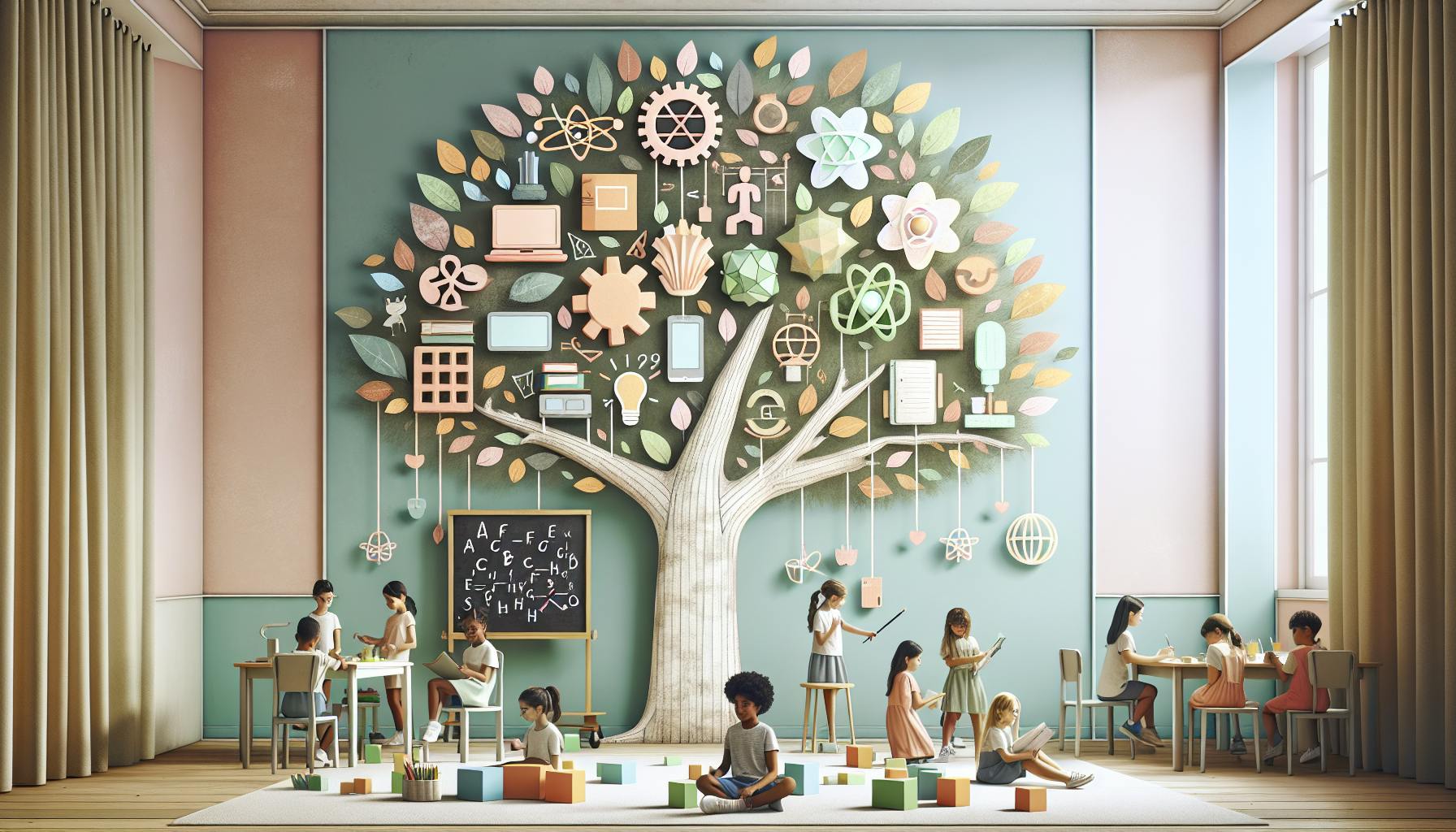Creating an inclusive classroom library with multicultural books is crucial, yet many educators struggle to curate diverse collections.
This article provides a framework and top recommendations for selecting authentic, stereotype-free diverse books that serve as mirrors, windows, and sliding glass doors for all students.
You'll get tips on finding #OwnVoices literature, ideas for culturally responsive teaching activities, and strategies for maintaining diversity long-term on a budget.
Introduction to Creating an Inclusive Classroom Library
Building an inclusive classroom library filled with multicultural books is crucial for promoting diversity, empathy, and cultural awareness among students. By exposing children to characters and themes from a variety of backgrounds, educators create welcoming environments where differences are celebrated.
Embracing Cultural Diversity through Multicultural Literature Books
Multicultural literature includes books that feature characters from diverse racial, ethnic, religious, and linguistic backgrounds. These books also explore themes related to cultural traditions, immigration experiences, prejudice, and accepting differences. When selecting multicultural books, prioritize those written by authors from the specific culture depicted. Seek books that authentically portray marginalized groups without promoting stereotypes.
Understanding Mirrors, Windows, and Sliding Glass Doors in Children's Literature
The "mirrors, windows, and sliding glass doors" metaphor conveys the value students gain from seeing themselves represented in diverse books. "Mirror" books reflect students' own cultures back to them. "Window" books provide glimpses into other cultures. "Sliding glass door" books invite deeper connections by promoting cultural understanding and empathy. Building a classroom library filled with vibrant multicultural books gives students mirrors to develop self-affirmation, windows to cultivate awareness of differences, and sliding glass doors to walk through to interact meaningfully across cultures.
How do you diversify a classroom library?
Building an inclusive classroom library with diverse books can seem challenging, but following these key tips can help:
Identify Existing Books with Stereotypes
Take stock of your current library and look for books that promote stereotypes or lack representation. This will help you identify gaps to fill.
Include as Many Unique Perspectives as Possible
Seek out books highlighting people of different races, cultures, genders, abilities, etc. The wider the representation, the more inclusive your library becomes.
Consider the Stories That Feature Diverse Characters
Choose books where diverse characters are protagonists and their stories are centered. This shows the value of different perspectives.
Ask for Help from Your Class
Get book recommendations from your students and their families. This ensures your library reflects their backgrounds.
Know Where to Find Diverse Stories
Use resources like We Need Diverse Books and Social Justice Books to discover inclusive options.
Use Your School's Resources for Assistance
Connect with your school librarian, diversity coordinator, or administrators for additional support in diversifying your classroom collection.
Building an inclusive classroom library is an ongoing process, but being thoughtful and proactive about representation can help every student feel welcomed.
How could a more mindfully multicultural selection of the classroom library or school library make an impact on students?
A more diverse and inclusive classroom library can have a profoundly positive impact on students. Here are some of the key benefits:
Validation and Representation
- When students see characters and authors that look like them, speak like them, or share their experiences, they feel validated and recognized.
- This can build self-esteem, empathy, and engagement with reading and learning.
Reduced Anxiety and Increased Participation
- Students who feel represented and understood tend to have lower anxiety. Their confidence rises.
- They may participate more actively in discussions and class activities when the subject matter reflects their identity and background.
Enhanced Cultural Awareness
- Reading #diverse_books exposes all students to new perspectives. This builds cultural awareness, empathy, and respect for diversity.
Improved Critical Thinking
- As students read and discuss inclusive literature, they develop critical thinking skills by considering different viewpoints and experiences.
Higher Achievement
- Extensive research shows a correlation between culturally responsive teaching materials and higher student achievement.
In summary, an intentionally curated multicultural classroom library ensures all students see themselves while expanding their cultural horizons. This creates an environment for students to thrive academically and socially.
What makes a book culturally diverse?
Culturally diverse books contain characters, perspectives, stories, ideas, and information that reflect the full range of human diversity. Here are some key elements that make a book culturally diverse:
Characters and Perspectives
- Features main characters of color or from marginalized groups
- Shows people from a wide range of cultural, ethnic, and racial backgrounds
- Includes perspectives from people with disabilities or neurodiverse conditions
- Depicts family structures beyond the traditional nuclear family
- Represents diversity in gender identity, sexual orientation, religion etc.
Stories and Information
- Authentically portrays experiences of marginalized or underrepresented groups
- Teaches about different cultures, traditions, languages, religions etc.
- Discusses issues like racism, discrimination, diversity, and inclusion
- Written by #authors from diverse backgrounds reflecting their experiences
Mirrors, Windows and Sliding Glass Doors
- Acts as "mirrors" reflecting students' own cultures and identities
- Provides "windows" into other cultures and perspectives
- Creates "sliding glass doors" for empathizing with other viewpoints
The key is showing students the richness of the human experience in all its diversity. This helps build identity, empathy, critical thinking, and inclusiveness.
What makes a good multicultural book?
A good multicultural book should contain positive and authentic portrayals of characters from different cultural backgrounds. Here are some key elements to look for:
Authentic Representation
- Features characters from diverse racial, ethnic, religious, and cultural backgrounds
- Avoids stereotypes and shows realistic behaviors and lifestyles
- Accurately depicts cultural details like clothing, food, language, etc.
Positive Portrayals
- Shows characters with dignity, depth and complexity
- Allows readers to relate to and identify with characters
- Promotes empathy, understanding and respect
Quality Illustrations
- Contains thoughtful images that align with the text
- Chooses illustrations carefully to avoid misrepresentation
- Enhances the storytelling through art
Cultural Details
- Weaves in culturally-relevant facts and details
- Explains cultural concepts clearly for readers
- Sparks interest and appreciation for other cultures
The best multicultural literature acts as both windows into other cultures and mirrors reflecting back accurate representations. Prioritizing authenticity and thoughtful portrayals is key.
sbb-itb-bb2be89
Selecting Culturally Diverse Books for an Inclusive Classroom Library
Creating an inclusive classroom library with authentic diverse books allows students to see themselves reflected while exposing them to new perspectives. However, finding quality multicultural literature requires thoughtful vetting. Here are some tips:
Ensuring Authentic Representation with #OwnVoices Diverse Books
The #OwnVoices movement highlights books written from marginalized perspectives and reflecting lived experiences. Seeking out Own Voices books helps ensure authentic diverse representation. Some examples:
- "New Kid" by Jerry Craft - A graphic novel about a Black 7th grader's experience starting at a prestigious private school. Written from the author's experience.
- "The Bridge Home" by Padma Venkatraman - A novel about two homeless sisters in India, written by an Indian-American author.
- "The Poet X" by Elizabeth Acevedo - An Afro-Latina teen finds her voice through slam poetry. Based on the author's youth.
Avoiding Stereotypes: Vetting Diverse Classroom Library Books
While building a multicultural classroom library, beware of stereotypes or inappropriate cultural appropriation. Consult resources like Social Justice Books' guide to evaluate diverse books.
Look for well-developed characters from marginalized backgrounds rather than token sidekicks. Seek authors from within represented communities writing authentic stories. Highlight current #OwnVoices titles rather than outdated portrayals.
Vetting materials helps create a classroom culture of inclusion, understanding, and respect. Diverse books should enlighten while avoiding reinforcement of reductive stereotypes.
Curating Multicultural Books for Elementary Students
Teachers can promote inclusion and representation in their classrooms by intentionally curating a diverse bookshelf. When students see themselves reflected in literature, it nurtures identity development and self-esteem. Additionally, books about people from different backgrounds build cross-cultural understanding.
Incorporating Diverse Picture Books for Early Readers
Here are some picture book recommendations showcasing diversity:
- "The Proudest Blue" by Ibtihaj Muhammad is about a young Muslim girl who wears a hijab for the first time. It promotes self-love and cultural pride.
- "Julian is a Mermaid" by Jessica Love explores gender identity as a young boy dreams of becoming a mermaid. The book models self-acceptance.
- "The Family Book" by Todd Parr uses colorful illustrations to showcase different types of families, including those with two moms or two dads. It teaches inclusion.
Selecting Multicultural Books for 3rd Grade and Beyond
Here are some middle grade novel recommendations told from diverse perspectives:
- "Front Desk" by Kelly Yang shares the story of a young Chinese immigrant managing racism and discrimination while helping run a motel. It offers an inside look at the immigrant experience.
- "Roll with It" by Jamie Sumner follows a girl with cerebral palsy navigating life in a new town using her electric wheelchair. The book provides disability representation.
- "Genesis Begins Again" by Alicia D. Williams tells the story of a young Black girl on a journey to self-acceptance and overcoming colorism within her community.
Culturally Responsive Teaching with Diverse Books in the Classroom
Incorporating multicultural literature into English Language Arts lessons and cross-curricular activities can foster cultural awareness and inclusivity in the classroom. Here are some best practices for using diverse books to promote culturally responsive teaching:
Exploring Cultural Diversity through Compare/Contrast Activities
- Have students read books depicting different cultural traditions and family structures, such as celebrations, foods, clothing, etc. Then facilitate discussions and activities where students compare and contrast what they learned. This allows them to recognize both differences and commonalities across cultures.
- Try a Venn diagram activity with the books "My First Chinese New Year" and "Let's Celebrate 5 Days of Diwali!" to compare cultural celebrations. Or do a T-chart with the books "Families" and "Family Pictures" to contrast family structures and dynamics.
- Use books like "Children Just Like Me" and "One World, Many Religions" to spark debates about cultural practices. Have students defend viewpoints using evidence from the texts, building critical thinking skills.
- Assign creative projects like dioramas depicting scenes from diverse books. This enables students to synthesize and apply what they learned about other cultures in a hands-on format.
Reframing Curriculum to Include Diverse Voices and Stories
- Audit existing literature choices and reevaluate from a diversity perspective. Make an effort to spotlight historically marginalized racial, cultural, religious, disability groups.
- Complement curriculum staples like "To Kill a Mockingbird" with modern counternarratives like "Dear Martin" showing perspectives of police brutality victims.
- When teaching topics like Civil Rights or immigration, purposely select stories spotlighting minority voices and experiences like "Separate is Never Equal" or "My Name is Jorge: On Both Sides of the River."
- Set goals for diversity ratios: e.g. 30% of literature covering racial minorities, 10% with disability representation, 5% spotlighting LGBTQ+ youth. Track progress quantitatively.
- Promote empathy and cultural consciousness by exposing students to #OwnVoices stories mirroring real struggles faced by fellow citizens and peers different from themselves.
Maintaining a Culturally Responsive and Inclusive Bookshelf
Stress the need for actively, intentionally seeking out multicultural voices rather than one-time token additions, outlining an incremental culturally responsive approach.
Funding Diversity: Allocating Budget for Multicultural Literature Books
When building a diverse classroom library, it is important to intentionally allocate part of your book budget specifically for purchasing multicultural literature titles. Here are some tips:
- Analyze your existing library collection for gaps and areas of improvement in cultural representation. Are certain student groups or perspectives missing? Make a list of target areas to fill.
- Set aside 20-30% of your annual book budget for purchasing diverse titles across cultures, races, abilities, gender identities, etc. This ensures you are continually adding a wide range of perspectives.
- Solicit student input and parent feedback to identify priority areas for new multicultural book purchases. What groups or topics are students most interested to see reflected?
- Leverage multicultural literature grants, diversity donations, and other external funding sources to supplement your budget for diverse books. This stretches dollars further.
- Focus new purchases on award-winning diverse books and own-voices titles told from authentic lived experiences. Quality representation matters.
Strategically dedicating a portion of resources to multicultural books prevents token one-offs. It enables the incremental growth of a library that mirrors and engages all students.
Engaging Students in Building a Diverse Bookshelf
Actively involving students in diversifying your library collection makes the process more meaningful while tailoring it directly to their needs and interests. Here are some ideas:
- Conduct beginning-of-year student surveys about their cultural backgrounds and what groups they want to see better represented. Tally results to define focus areas.
- Have students nominate books related to their identities and experiences for you to purchase. Curate student-driven lists of suggestions.
- When new diverse books arrive, allow students who championed them to be the first to explore the titles and provide peer recommendations.
- Train student leaders from different backgrounds to audit your shelves using diversity metrics tools and recommend areas for improvement.
- Recruit student volunteers to help decorate your library displays that promote specific cultural groups and awareness months.
Getting students invested through choice, voice and leadership makes your diverse collection feel more relevant and engaging to them. It transforms students into diversity advocates.
Conclusion: Embracing Diversity in Literature for Inclusive Classrooms
Creating an inclusive classroom library with diverse books can provide immense value for students. Here are some key takeaways:
- Representation matters. When students see themselves reflected in books, it builds self-esteem and empathy.
- Windows and mirrors. Diverse books act as both windows into other cultures, and mirrors that reflect students' own backgrounds. This builds cultural awareness and sensitivity.
- Sliding glass doors. Diverse literature invites students to step into new worlds and perspectives, expanding their worldviews.
- Critical thinking skills. Analyzing and discussing diversity in literature develops students' critical thinking abilities.
- Real-world readiness. Exposure to diversity through books prepares students to navigate an increasingly diverse society.
As you build your classroom library, focus first on titles that reflect your existing students. Then expand to include titles that represent a wide range of cultures, backgrounds, and experiences. Aim for a balance of mirrors and windows. Leverage book lists and awards like the Coretta Scott King Book Awards or Schneider Family Book Awards to find quality diverse titles. By embracing diversity in literature, you take an important step towards building an inclusive classroom where all students feel valued, understood, and heard.


